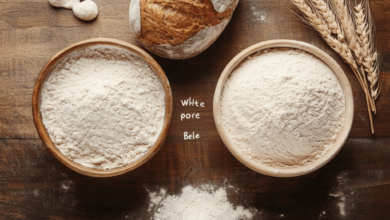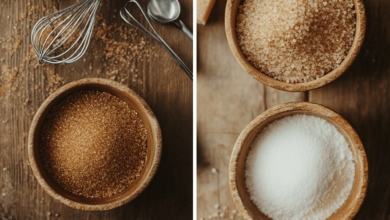Which One Is Better: Active Dry Yeast or Instant Yeast?

Introduction
“Which one is better: active dry yeast or instant yeast?”
Choosing the right yeast can make a big difference in your bread’s texture, flavor, and rise. While both active dry yeast and instant yeast are popular choices for home bakers, they have distinct differences that affect how they perform in recipes. This guide compares the two types of yeast to help you decide which one is better for your baking needs.
1. What Is Active Dry Yeast?
Active dry yeast consists of dehydrated yeast granules that need to be rehydrated before use.
- How to Use: Dissolve in warm water (95–110°F or 35–43°C) with a pinch of sugar to activate.
- Best For: Recipes with longer rising times, such as artisan breads.
- Pros:
- Widely available and easy to store.
- Allows more control over proofing time.
- Cons:
- Requires activation before use.
- Slightly slower fermentation process.
2. What Is Instant Yeast?
Instant yeast is finer and can be mixed directly into dry ingredients without rehydration.
- How to Use: Mix directly with flour or other dry ingredients.
- Best For: Quick bread recipes, rolls, and pizza dough.
- Pros:
- No activation required; faster and more convenient.
- Consistent results in a shorter time.
- Cons:
- Can ferment too quickly for recipes requiring long proofing.
3. Key Differences Between Active Dry Yeast and Instant Yeast
| Feature | Active Dry Yeast | Instant Yeast |
|---|---|---|
| Activation Needed | Yes, dissolve in warm water | No, mix directly into dough |
| Fermentation Speed | Slower | Faster |
| Best Uses | Artisan breads | Quick breads and pizza dough |
| Shelf Life | Long (if stored properly) | Slightly longer |
Tip: Use instant yeast for recipes where speed matters and active dry yeast for recipes that require flavor development over time.
4. Can You Substitute One for the Other?
Yes, you can substitute active dry yeast and instant yeast with a few adjustments:
- Instant Yeast Instead of Active Dry:
- Reduce the amount of yeast by 25%.
- Skip the activation step.
- Active Dry Yeast Instead of Instant:
- Increase the amount of yeast by 25%.
- Dissolve in warm water before adding to the recipe.
5. When to Use Each Type of Yeast
- Choose Active Dry Yeast:
- For recipes requiring long proofing times.
- When you want to control the rise for more complex flavors.
- Choose Instant Yeast:
- For quick recipes with short proofing times.
- When convenience is key.
Pro Tip: Both types of yeast can produce excellent results with proper handling.
Conclusion
Both active dry yeast and instant yeast have their strengths, and the choice depends on your recipe and baking style. Use active dry yeast for artisan breads with long proofing times and instant yeast for quick and consistent results. Understanding their differences will help you achieve the perfect rise and flavor in your baked goods.
For more baking tips and insights, visit our Kuestion.com.




